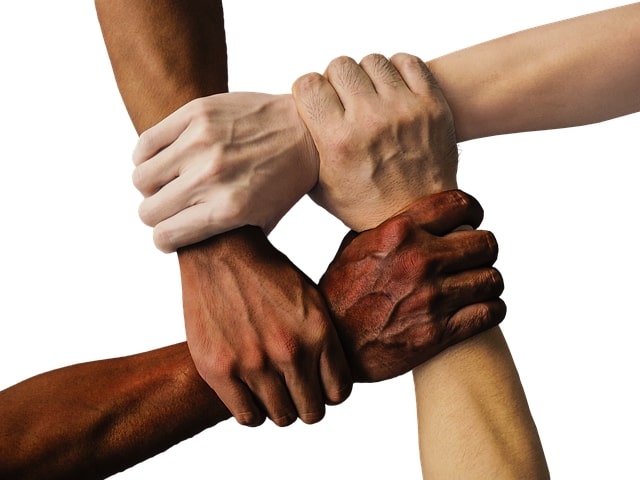What are the Key Ingredients to Effective Intercultural Interactions?
Dr. David Matsumoto, Director of Humintell, recently led a free webinar where he provided participants with an overview of major research findings concerning keys to effective intercultural communication, as well as practical tips to interact with others from different cultures.
Most of us live in a multi-cultural society where effective intercultural communication is crucial. This is as a result of technology and other advancements. The world is getting smaller every day!
The Difference Between Cross-Cultural Adaptation vs Adjustment

Dr. Matsumoto believes at the heart of all intercultural communication and interactions is a process of adaptation and adjustment. Many scholars do not delineate between these two concepts.
Adaptation refers to the process of altering one’s behavior to fit in with a changed environment or circumstances.
Adjustment refers to the subjective experiences that are associated with, result from, or are consequences of, adaptation, and that motivate further adaptation. Dr. Matsumoto explains adjustment in laymen’s terms as “how we feel about what we’re doing”.
Living in any society in any culture requires a constant process of adaptation and adjustment, as noted in the above graphic. This process also encapsulates the underlying process of growth.
Defining Successful Intercultural Communication

How does Dr. Matsumoto define successful intercultural communication?
He outlines 4 factors that play a part, as seen in the graphic below.
- Having successful relationships with people from other cultures.
- Feeling that interactions are warm, cordial, respectful, and cooperative.
- Accomplishing tasks in an effective and efficient manner.
- All of the above, and the ability to manage psychological stress effectively.
Research has shown there are a lot of different types of people in terms of how they adapt and adjust in different cultures.
There’s many people who adapt (change their behaviors) but don’t adjust well. Adjustment problems may manifest itself in depression or anxiety or substance abuse problems.
Then there’s people who feel things are perfectly fine but they’re not adapting well.
Adaptation and adjustment go hand in hand when discussing intercultural interactions and intercultural communications.
The Contact Hypothesis (Allport, 1954)
 So what does the science say about intercultural adjustment and communication?
So what does the science say about intercultural adjustment and communication?
One very important concept is called the Contact Hypothesis which is the proposition that contact between groups is effective in reducing prejudice.
One study that tested the contact hypothesis was known as The Robbers Cave Experiment where two group of boys were invited to participate in a summer camp (which in reality was part of a study in intergroup relationships).
The boys were separated into two groups (Rattlers and Eagles) and when the groups were unaware of each other, group activities were directed at building unity and cohesion.
During the second week, the two groups were brought together in a competitive environment where the other group became an obstacle to resources.
It was during this competitive period that the groups became hostile toward one another, calling each other names and even engaging in physical fights.
After a period of conflict, the groups participated in a superordinate goal and hostile feelings between groups were reduced after researchers allowed the groups to work cooperatively.
The Robbers Cave Experiment showed that when two groups feel mutually interdependent, hostility between groups subsides.
Key Psychological Ingredients to Effective Intercultural Competence

There’s also a large body of research that have examined what key psychological ingredients (skills, traits, abilities) can help intercultural competence effectiveness.
The instruments that have been developed examine traits have been shown across the last 50 years to be indicative of effective cross-cultural communication.
These tests include the Multicultural Personality Questionnaire (MPQ), Cultural Intelligence Scale (CQS), and Intercultural Adjustment Potential Scale (ICAPS).
A 2013 study entitled Assessing Cross-Cultural Competence: A Review of Available Tests by Matsumoto and Hwang reviewed the validity of all existing instruments.
They found that the most important predictor of successful cross-cultural adaptation was emotional robustness aka emotion regulation.
Learn More About The Basics of Emotional Intelligence by Clicking Here.
Negative emotional reactions from cultural differences are inevitable. Adapting to these differences well require people to regulate their emotions well so they can acquire new skills and behaviors.
Final Tips and Advice for Next Steps
Dr. Matsumoto concluded his webinar by offering some helpful tips.
1. Get exposure to different people and cultures
2. Engage in activities or training to improve your own emotion regulation skills
He ended the webinar by playing the video below about Tarra and Bella- The elephant and dog who became best friends.
The post The Key Ingredients to Effective Intercultural Interactions first appeared on Humintell.
 They discuss Dr. Matsumoto’s famous Olympic Judo Study entitled
They discuss Dr. Matsumoto’s famous Olympic Judo Study entitled  “Who’s so cute? Yes you are. You’re so cute, aren’t you?” Baby talk sounds pretty similar whether we’re cooing to babies or our dogs.
“Who’s so cute? Yes you are. You’re so cute, aren’t you?” Baby talk sounds pretty similar whether we’re cooing to babies or our dogs. Gergely’s study suggested that the parents’ faces were the most intensely expressive—with more exaggerated expressions—when talking to their babies, especially when reciting the nursery rhyme and scripted sentences.
Gergely’s study suggested that the parents’ faces were the most intensely expressive—with more exaggerated expressions—when talking to their babies, especially when reciting the nursery rhyme and scripted sentences.